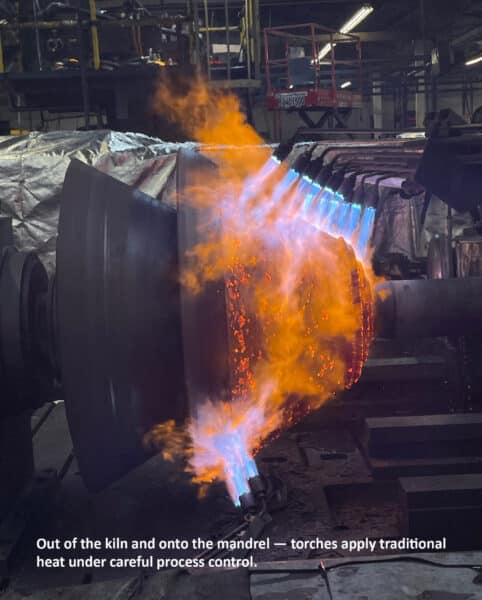History tells us that the Chinese accidentally developed the first rockets, when would-be pyrotechnicians from the first century AD began tossing gunpowder-filled bamboo tubes into fires for religious festivals. One thousand years later, their descendants would use “arrows of flying fire” to repel Mongol invaders in the battle of Kai-Keng.
Physicist Robert Goddard brought rocketry into the modern age in 1926 after sending the first liquid-fueled rocket 41 feet in the air, laying the foundations for ballistic warfare and inadvertently launching the Space Race that would culminate 43 years later with humans setting foot on the moon.
Rumor has it that we’ll be returning soon, and many have their eyes on Mars and possibly beyond. Until that glorious day, rocketry is alive and well, with thousands of satellites, probes, and crewed spacecraft launched annually; the industry employs a combination of liquid and solid fuel to carry their payloads high above the Earth’s surface.
Whatever their purpose and no matter what fuel they use, all rockets today depend on a common component: the rocket nozzle, that fire-spewing conical device attached to the rocket’s bottom that allows it and its precious cargo to slip Earth’s surly bonds.
Though simple in appearance, rocket nozzles must not only withstand immense heat, pressure, and highly corrosive exhaust, but are custom designed and manufactured to exacting specifications. To meet this first set of demands, most are constructed of C18150 copper or a comparable alloy able to withstand these harsh conditions.
As for the specifications, they are largely inspired by the work of aerospace engineer and Goddard contemporary Gadicharla Rao; while at Rocketdyne in the 1950s, he used early mainframe computers to design the parabolic, bell-shaped internal contour employed by practically all rocket nozzles today.
Design inspirations aside, as a design progresses the challenge turns towards the perspiration of production. Smaller nozzles like those used in thrusters or military rockets can be machined from solid billet, but for larger space-borne versions, this approach is both costly and wasteful. Because of this, manufacturers produced early versions of the Rao nozzle by joining a series of progressively larger rolled rings, each welded to its neighbor to provide a rough approximation of the rocket nozzle, then machined to specification.
Needless to say, this requires scrupulous effort and no small amount of skill to “find” the finished workpiece within the welded blank and bring it to the correct dimensions. A more effective means is to cast the workpiece blank, pouring molten metal into a mold and then machining the nozzle to size afterward.
There’s just one problem, though: cast metals are less strong and more inclined to undesirable “inclusions” than billet or forged materials. This explains why the latter technology—forging—has long been a preferred process for nozzle production, even though the tooling is costly and lead times to deliver a forged, ready-to-machine blank quite lengthy.
There’s another manufacturing solution, however, one whose roots were established long before the Chinese flew their first flaming arrow. It’s called spin-forming or sometimes flow-forming, and is especially well-suited to larger nozzles that cannot be produced via the newcomer to this space, metal 3D printing.
Spin-forming and other types of advanced metal spinning are deeply technical processes, but simply put, it works much as its name suggests. A circular metal blank is placed over a shaped mandrel and, using heat and pressure, forced to “flow” into the desired shape. Plate or sheet stock can be used, as well as forged pre-blanks that allow for the production of even very complex shapes.
The workpiece still requires machining once it comes off the mandrel; because spin-forming is more accurate than the other manufacturing processes just described, the amount of finishing work is reduced. So is material waste, an important—and often the determining—factor when sourcing and working with expensive alloys.
Perhaps most important to the rocket manufacturer is that spun-formed parts exhibit superior material properties with dense grain structure. They are tough, lightweight, and quite precise. Tooling costs are minimized, lead time is shortened, quality and yield are high.
If you’re one of the many rocket manufacturers looking for high quality in a fast, cost-effective, and safe way to get your wares headed to the skies and beyond, take a look at spin-forming. It might just be the best thing since arrows of flying fire.
More about Rocket Nozzles: Types, Manufacturing & Materials click here. Or to learn more about Metal Spinning -The Best Process for Spacecraft Components click here.
Contact us to obtain a quote or run your challenging projects by us. We’d be happy to assist!

